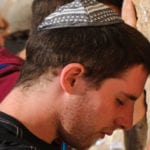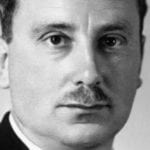 Weird Stuff
Weird Stuff  Weird Stuff
Weird Stuff  Mysteries
Mysteries 10 Tragic Disappearances and Deaths in Joshua Tree National Park
 History
History 10 Ways Childhood Really Sucked in the Old West
 Music
Music 10 Name Origins of Famous Bands from the 1990s
 Religion
Religion 10 Biggest Turnarounds by the Catholic Church
 Weird Stuff
Weird Stuff 10 Unbelievable Times Laws Had Unintended Consequences
 Humans
Humans Ten Historic Women Who Deserve Way More Credit Than They Got
 Movies and TV
Movies and TV 10 Films That Spawned Major Lawsuits
 History
History Ten Times Towns Were Wiped Off the Face of the Earth
 Creepy
Creepy 10 of the Most Disturbingly Haunted Public Houses in the UK
 Weird Stuff
Weird Stuff 10 Niche Subcultures That Are More Popular Than You Might Think
 Mysteries
Mysteries 10 Tragic Disappearances and Deaths in Joshua Tree National Park
 History
History 10 Ways Childhood Really Sucked in the Old West
Who's Behind Listverse?

Jamie Frater
Head Editor
Jamie founded Listverse due to an insatiable desire to share fascinating, obscure, and bizarre facts. He has been a guest speaker on numerous national radio and television stations and is a five time published author.
More About Us Music
Music 10 Name Origins of Famous Bands from the 1990s
 Religion
Religion 10 Biggest Turnarounds by the Catholic Church
 Weird Stuff
Weird Stuff 10 Unbelievable Times Laws Had Unintended Consequences
 Humans
Humans Ten Historic Women Who Deserve Way More Credit Than They Got
 Movies and TV
Movies and TV 10 Films That Spawned Major Lawsuits
 History
History Ten Times Towns Were Wiped Off the Face of the Earth
 Creepy
Creepy 10 of the Most Disturbingly Haunted Public Houses in the UK
10 Times Christians, Jews & Muslims Rescued Each Other
Religious strife happens all too often. Whether we read history books or current headlines, there are far too many stories of people hating others and even resorting to persecution and violence because of religious differences. This seems to be especially true among the three major Abrahamic faiths of Judaism, Christianity, and Islam. The bitterness between these three religions can seem so deeply entrenched that you could wonder if they ever have, or ever will, manage to peacefully coexist.
Fortunately, though the problems are real and very serious, they do not tell the full story. There are numerous instances of mutual respect and peace between these faiths. More than that, there are many stories of the people of one of these religions risking everything to defend members of a different faith. These stories are also real, and retelling them shows us what the world could be like if every person of every faith lived out the love of neighbor that all religions claim as a central tenet.
10 Syrian Muslims
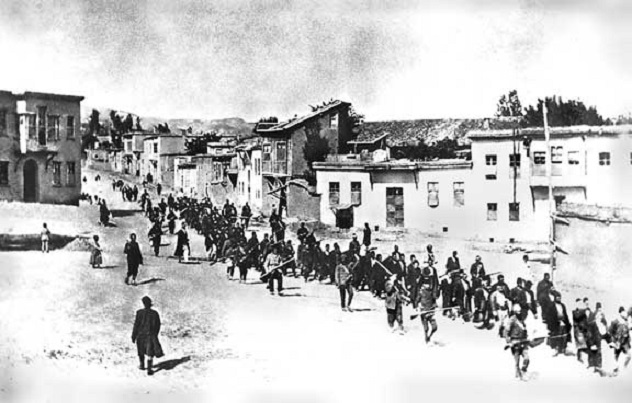
In 1915, the leaders of the declining Ottoman Empire decided they wanted a “Turkey for Turks” and began their own program of what is now called “ethnic cleansing.” They targeted the region of Armenia, where approximately 2.5 million Armenian Christians lived. The systematic massacres, seizures of property, and deportations, which claimed more than a million lives, have become known as the Armenian Genocide.
There was very little international outcry about the atrocities, and no nation intervened on behalf of the Armenians. However, there was sanctuary given to them in Syria, and especially the city of Aleppo. Syria’s population consisted mainly of Arab Muslims, but Syria was a region where Muslims, Christians, and Jews had a long history of peaceful coexistence. They welcomed the Armenians and offered the refugees a safe haven.
It is a terrible irony that, starting in late 2012, hundreds of thousands of Syrians have become refugees, escaping the violence of the terrorist group ISIL. The international community is still struggling with the best way to deal with this crisis, but Armenian communities in Europe, Canada, and the United States have become advocates for the descendants of the Muslims who rescued them a century ago.
9 Refik And Xhemal Veseli

Albania is another European nation where Christians, Muslims, and Jews have lived together in peace for a very long time. A good example of this can be found in the story of a 17-year-old Muslim youth, named Refik Veseli, who worked as an apprentice to Jewish photographer Moshe Mandil in Tirana. When the Nazis occupied the country in April 1941, Refik realized that Moshe was in danger. Refik took Moshe, his wife Ela, and their two children with him to his parents’ home in the remote mountain village of Kruja.
Refik’s brother Xhemal had also befriended a Jewish family, the ben Yousefs, in Tirana, and also brought them to Kruja for safety. The two families remained safely with the Veselis through many dangerous situations until after the war.
The courage and kindness of the Veselis is only one of many stories of Albanian Muslims sheltering Jews according to their honor code of besa, which literally means, “to keep the promise.” Among other things, this code requires Albanian Muslims to offer sanctuary to all refugees and is the subject of the 2012 documentary Besa: The Promise.
8 The Greek Bishops

Greece is a place where Orthodox Christians and Jews had lived together in peace for centuries. This was shown in the official letter of protest that Archbishop Damaskinos and 27 prominent Greek leaders signed after the Nazis deported many Jews from Greece. The letter said, in part:
In our national consciousness, all the children of Mother Greece are an inseparable unity: they are equal members of the national body irrespective of religion. [ . . . ] Our holy religion does not recognize superior or inferior qualities based on race or religion, as it is stated: “There is neither Jew nor Greek” and thus condemns any attempt to discriminate or create racial or religious differences. Our common fate both in days of glory and in periods of national misfortune forged inseparable bonds between all Greek citizens, without exemption, irrespective of race.
The archbishop published the letter and quietly instructed his churches to issue false baptism certificates to Jews to hide their identities. When threatened with a firing squad by the SS commander for Greece, Damaskinos said, “According to the traditions of the Greek Orthodox Church, our prelates are hanged, not shot. Please respect our traditions!”
Just as inspiring is the example of Bishop Chrystomos and Mayor Lucas Karrer of the island of Zakynthos, where 275 Jews lived. When the Nazis demanded a list of the names of all the Jews on the island, the bishop responded with a letter that had only two names: his and the mayor’s. The Nazis searched the island, but the population had successfully hidden all of the Jews.
When the island was struck by a devastating earthquake in 1953, Israel was the first nation to send relief. Along with the help came a letter reading, “The Jews of Zakynthos have never forgotten their Mayor or their beloved Bishop and what they did for us.”
7 The Denmark Rescue
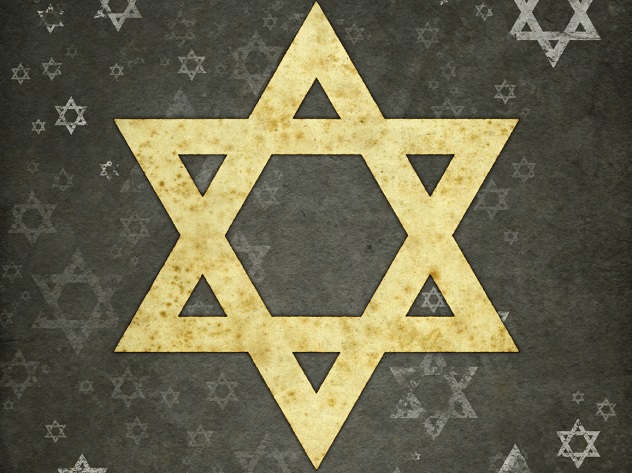
There is a commonly told story about the Danish Jews and the things their countryfolk did to protect them. The Nazis occupied Denmark in April 1940. Sometime after that, the story goes, the SS regional commandant went to King Christian X and demanded that all Danish Jews be required to wear a yellow Star of David on their clothes so they could be easily identified. The Nazis were shocked when the king appeared in public a few days later wearing a yellow star on his clothes. He encouraged all Danes to follow his example so there would be no way to distinguish Jew from Gentile in Denmark.
Sadly, this beautiful story is an urban legend, but it does accurately reflect the feelings of the people of Denmark. The Nordic nation was predominantly Lutheran Christian, but there was a long-standing tradition of good relations between Christians and Jews. In fact, the bonds between Jews and Christians were so strong that the Nazis initially decided not to press the issue of what they called the “Jewish question.”
There was also a mutual resistance to the Nazis and their occupation, and Danes of all religions participated in acts of resistance and sabotage. In September 1943, faced with the Allied advance, the Nazis decided to deport all Danish Jews to concentration camps. Learning of this, the Danish Resistance, aided by much of the population, moved quickly to organize an evacuation. Jewish families were hidden in private homes, churches, and even the properties of the Danish royal family while Danish officials used all manner of delaying tactics to prevent searches. Through the month of October, boats, mainly fishing vessels, were used to ferry 7,200 Jews and 700 Gentile family members to safety in neutral Sweden, making this the largest rescue of Jews from occupied Europe in World War II.
6 The Paris Grand Mosque
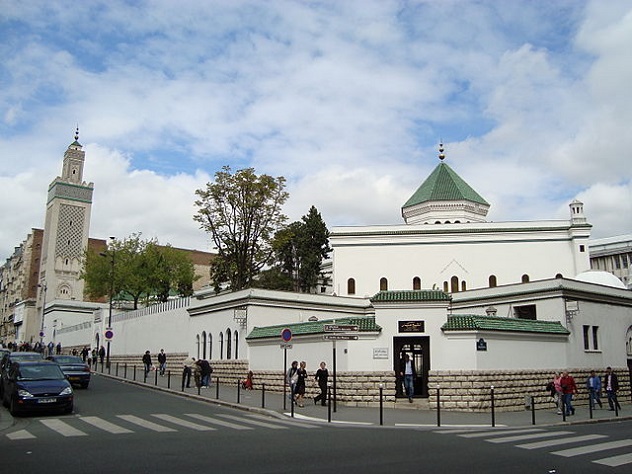
There are many stories of heroic groups and individuals who risked themselves to shelter Jews from the Nazis. One of the most unexpected is that of Si Kaddour Benghabrit, the founder and rector of the Grand Mosque of Paris and his community.
The mosque was built in 1922 to honor the Muslim nations of North Africa who had helped France in World War I. The Nazis occupied Paris in June 1940. In July 1942, they arrested 12,884 Jews, including 4,115 children, with the plan to send them all to the Auschwitz death camp. However, the mosque provided a natural safe haven. The Sephardic Jews from North Africa spoke Arabic and shared many of the cultural habits of their Muslim neighbors. With a little acting, they could easily pass as Muslim Arabs. The mosque was a place where Jews, and resistance fighters could rest, bathe, eat, and find a temporary sanctuary from the Nazis.
The historical records are sketchy, but one unconfirmed account suggests the mosque may have sheltered as many as 1,700 people, mostly Jews, from arrest during the war years. Most historians believe the mosque may have helped a total of around 100 Jews.
The story is the subject of the children’s book The Grand Mosque of Paris: A Story of How Muslims Rescued Jews During the Holocaust by Karen Gray Ruelle and Deborah Durland DeSaix and the 2011 French film Les Hommes Libres (“Free Men”).
5 Corrie Ten Boom
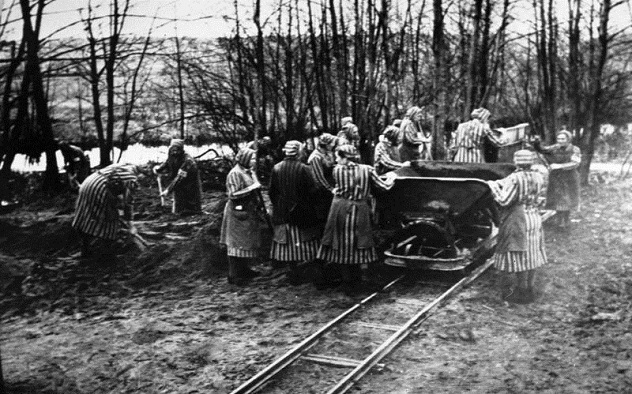
Corrine “Corrie” ten Boom was a Dutch woman who is honored by the Yad Vashem Remembrance Authority as one of the Righteous Among the Nations for her work in rescuing Jews from the Nazis during World War II.
Corrie and her family were members of the Dutch Reformed Church, which taught that the extermination of the Jews was an injustice to their fellow human beings and an affront to God. She took this to heart and worked to help and protect her Jewish neighbors any way she could. She worked out of her family home in Haarlem, the Netherlands, converting it to a safe house where Jewish refugees could hide until they could be smuggled out of the country to safety. She gives a riveting account of this in her book, The Hiding Place. She rescued nearly 800 from the Holocaust.
On February 28, 1944, the Gestapo raided the ten Boom house. They didn’t find any of the six refugees then hiding there, but they arrested Corrie, her father, brother, both sisters, and other family members anyway. She and her sister Betsy were transferred to Ravensbrueck concentration camp, where Betsy died. Her father also died in a different prison.
Corrie ten Boom was released as the war came to an end. She returned to her home and worked for causes of reconciliation and peace until her death in 1983.
4 Tahrir Square
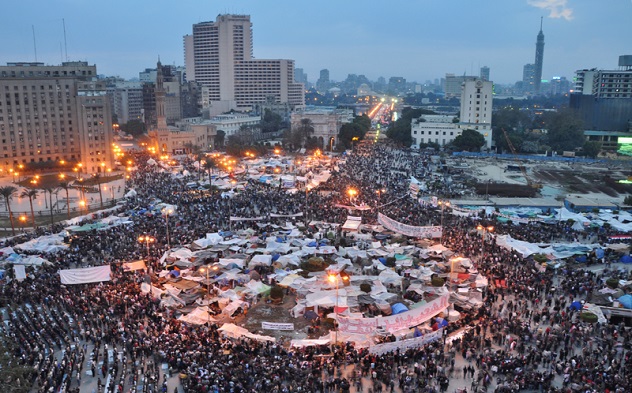
In late January 2011, Tahrir Square in Cairo became an area of intense protest during the Egyptian Uprising. The revolution, which ousted dictator Hosni Mubarak from power, was remarkable for its lack of violence. It also produced striking images of Egypt’s Muslims and Coptic Christians working together to create a better future for their country.
The Copts are a Christian sect which has been in Egypt since ancient times. For most of their history, the relationship has been fairly good, but there have been tensions in modern times. Both the Mubarak government and the Muslim Brotherhood have been accused of stoking anti-Coptic sentiment in Egypt for their own ends.
But in the demonstrations in Tahrir Square, there was a remarkable degree of cooperation and goodwill between the two faiths as Muslims and Christians stood together to demand a better Egypt. The most dramatic evidence of this came on Friday, February 4, which protesters referred to as the Day of Departure. When Muslims spread their mats for midday prayer, Christian protesters joined hands to form a protective circle around them. Christians and Muslims came together to protest the government, with the crescent embracing the cross becoming a popular symbol in Tahrir Square.
Events since the uprising have shown that Egyptian Muslims and Christians have a long way to go to reach peaceful coexistence, but Tahrir Square is a reminder that there are many people of both faiths who long for that day.
3 The Shomrim
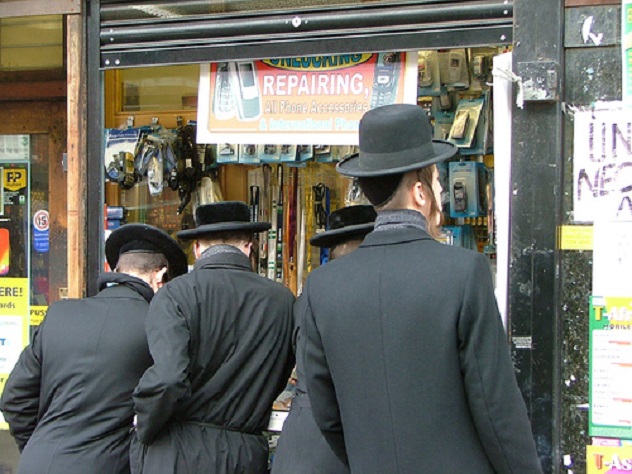
Since 2008, the Orthodox Jewish community in Stamford Hill, London (some of whose members are pictured above), had been protected by the Shomrim, a Jewish citizen’s patrol that works with police to report and prevent crimes. In 2013, the group came to international prominence when they expanded their patrols to protect Muslim neighborhoods as well.
The change came after a spike in anti-Muslim violence following the 2013 murder of soldier Lee Rigby by Muslim extremists. The violence included the fire-bombing of several mosques. Concerned about the ability of police to safeguard Muslims, local councillors from Hackney, North London, approached the Shomrim, who were well-organized and located close to the Muslim areas.
They were happy to help. As Shomrim member Shulem Stern told the AFP, “The local Muslims and local Jewish people do so much business together. In religious aspects as well there are loads of similarities. Also, because we’re visible and suffered a long history of hate crime, we’re very alert to anything unusual.”
When the Shomrim—who take their name from a Yiddish word for “guardians”—first organized, there was a fear of vigilantism, but they have proven to be valuable allies to the police, acting as their eyes and ears. Wearing stab-proof vests with the word SHOMRIM emblazoned on them over their traditional Orthodox clothing, they have become a welcome presence and a symbol of hope to Londoners of all faiths.
2 The Oslo Synagogue
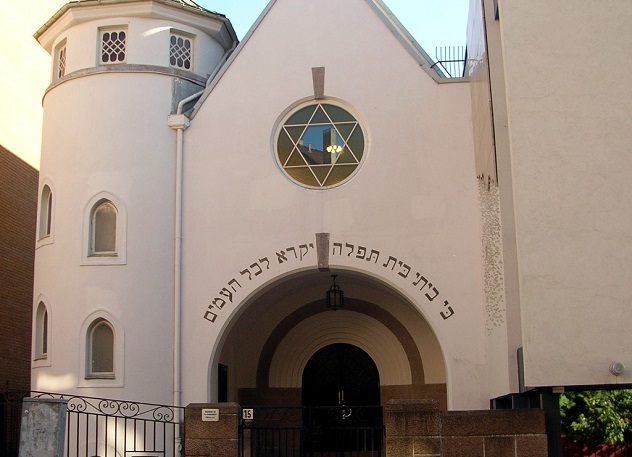
In February 2015, over 1,000 Norwegian Muslims assembled at the only functioning Oslo synagogue, shown above. They held hands to form a protective line around the building and chanted, “No to anti-Semitism. No to Islamophobia.”
The demonstration was a symbolic show of support and peaceful coexistence. It came one week after a shooting at an event promoting free speech in a Copenhagen synagogue. Danish-born Omar Abdel Hamid El-Hussein, the son of Palestinian immigrants, killed two people, apparently as a hate crime, but Oslo Muslims wanted the nation to know the troubled young man was not reflective of their community.
“Humanity is one and we are here to demonstrate that,” organizer Zeeshan Abdullah said at the event. “There are many more peacemongers than warmongers. There’s still hope for humanity, for peace and love, across religious differences and backgrounds.”
1 Christians And Muslims In Cameroon
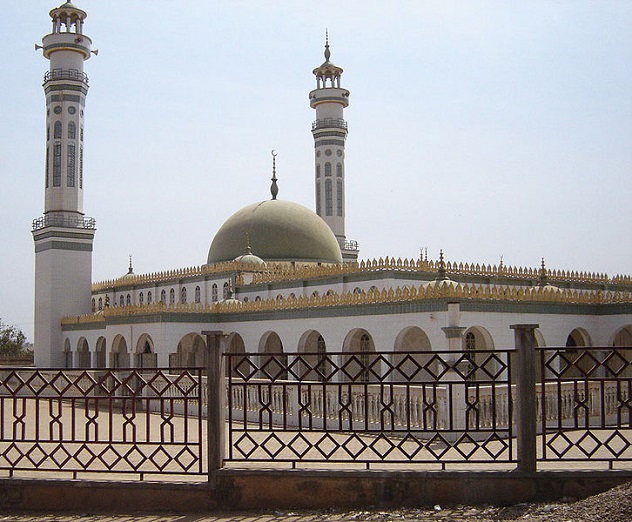
Cameroon is a central African nation where Christianity and Islam have lived side by side in relative harmony for generations. Now, members of both faiths are joining forces against the radical group Boko Haram, which wants to establish an extremist Islamic state in the region.
Since Boko Haram has attacked both churches and mosques, the people of Cameroon have come up with a unique strategy. When Christians are at worship, Muslims stand guard over their churches. When Muslims are at prayer, Christians protect their mosques, like the Lamido Grand Mosque pictured above.
It’s a new tactic, but the good relationship between the faiths goes back a long way in the country. Joseph Klofou of the Protestant Church of Cameroon put it this way: “I feel frustrated seeing my brothers and sisters dying. I must act while praying to God to send his angels and warriors to fight Boko Haram because he is the merciful God of armies.”
Djafarou Alamine of the central mosques expressed a similar sentiment: “I am out to fight because Boko Haram is a group of bad people. Islam condemns all that they have been doing to both Christians and Muslims who are all God’s creatures even though they have religious differences.”
These religious leaders and the people they serve have chosen to take a brave stand for each other and against violent extremism.
Matthew Baugh is the author of more than 40 published short stories and three novels: The Vampire Count of Monte Cristo, A Girl and Her C.A.T. (with Win Scott Eckert), and The Avenger: The Sun King. He is a longtime comic book and pop culture nerd as well as an ordained pastor.


